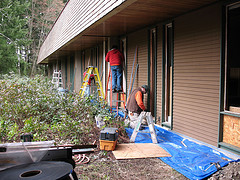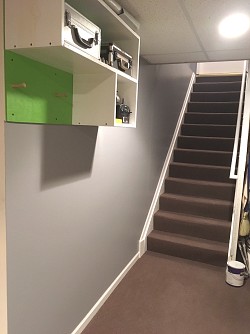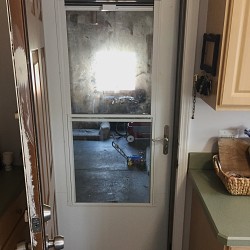Install Energy-Efficient Windows
 Energy-efficient window installation not only decreases your carbon footprint and lowers your utility bills. It also helps reduce your HVAC equipment requirements, while keeping your home more comfortable in cold weather and hot. What’s more, it will control indoor humidity (less vapor condensation on your window panes!) and diminish noise. Just buying the greenest windows on the market is not enough, though. To really get your money’s worth, make sure that they are optimally installed.
Energy-efficient window installation not only decreases your carbon footprint and lowers your utility bills. It also helps reduce your HVAC equipment requirements, while keeping your home more comfortable in cold weather and hot. What’s more, it will control indoor humidity (less vapor condensation on your window panes!) and diminish noise. Just buying the greenest windows on the market is not enough, though. To really get your money’s worth, make sure that they are optimally installed.
- Before purchasing energy-efficient windows for a retrofit, try “hacking” your current windows. Add storm windows, insulate with weather stripping or caulk, and seal to reduce air leakage.
- Should the above methods fail to provide the degree of home comfort and fuel bill savings that you are looking for, then consider installing energy-efficient windows. Shop for new windows which have been certified by the Energy Star program.
- Determine whether the window frames which you have now are still in good shape. If so, you will be able to simply replace the glass panes.
- However, if your current frames are not sound, decide on the kind of replacement framing that you want. Fiberglass ranks high in terms of energy conservation, stability, and ease of maintenance but is also the most expensive frame type. Wood is attractive and excellent at insulation, while vinyl is very affordably priced. However, both wood and vinyl have a common problem: they tend to expand or contract as the temperature changes, leading to air leakage. In addition, wood requires a certain amount of maintenance. Aluminum window frames are the poorest at energy conservation, but may be the best choice if they are to stand up to severe humidity and the force of hurricanes.
- Use Energy Star’s guidance to purchase windows which are designed specifically for your regional climate zone – northern, north-central, south-central, or southern. Select the correct grade for your area, taking into account the local basic wind speed. Consult the building official for your area to find out code specifications.
- Hire a qualified professional with the know-how to install the window type that you’ve chosen. Windows must be installed watertight, and level, plumb, and square. Adequate room should be allowed for thermal expansion.
- Make sure that the windows are installed according to the manufacturer’s recommendations for maximum performance.
- Take care that all newly installed windows will still meet emergency egress requirements, in terms of their size and the capability of being opened from the inside without any tools.
- Have the window frame caulked and operable components weatherstripped at the time of installation, to prevent air leakage. (Check that the type of caulk you plan to use will be compatible with the energy-efficient window installation, and that it can be painted, should that be desirable.) Apply insulation, but only to the point where the sash can still operate freely.
- If you are going to have wood window frames painted, make sure to avoid applying paint to any non-wooden components, such as the weatherstripping.
Laura Firszt writes for networx.com.
Looking for a Pro? Call us (866) 441-6648

Carpentry Average Costs
Carpenters Experiences

Find A Painter Willing To Work With The Style YOU Have In Mind

Urgent Air Conditioner Repair At Pizzeria Caught In A Heatwave

Garage Storm Door Installation At A Good Price
Top Cities Covered by our Carpenters
Austin
| Boston
| Charlotte
| Chicago
| Columbus
| Dallas
| Denver
| Fort Worth
| Houston
| Indianapolis
| Jacksonville
| Los Angeles
| Nashville
| New York
| Philadelphia
| Phoenix
| Portland
| San Antonio
| San Diego
| San Jose
| Seattle
| Washington


_124993591aab77ad33f7fa7b498495f7.jpg)